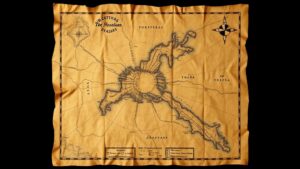Tracing Lost Horse-Drawn Tramways for Urban Transportation Relics
Tracing Lost Horse-Drawn Tramways for Urban Transportation Relics
Horse-drawn tramways were a significant part of urban transportation in the 19th century, paving the way for modern mass transit systems. This article explores the historical context, development, and modern-day implications of tracing these lost transportation relics, specifically focusing on the methodologies used in urban archaeology and their contributions to understanding urban history.
The Historical Context of Horse-Drawn Tramways
Horse-drawn tramways emerged in the early 19th century as a solution to the overcrowding and limited mobility prevalent in burgeoning urban areas. The first recorded horse-drawn tramline was established in George Shillibeers London service in 1829. system utilized horse-drawn cars on rail tracks, significantly enhancing the efficiency of transport.
By the mid-1800s, cities such as New York, Philadelphia, and Paris adopted these tram systems. An estimated 350 miles of horse-drawn tramlines were in operation across various cities by the early 20th century, making them a crucial component of urban infrastructure.
Tracing Lost Tramways: Methodologies and Techniques
Urban archaeologists and historians utilize a variety of methodologies to trace the remnants of lost horse-drawn tramways. Some common techniques include:
- Geographic Information Systems (GIS): GIS technologies allow researchers to map out historical tramway routes by overlaying old maps with current city layouts.
- Historical Documentation: Archival research involving city records, transit maps, and passenger accounts provides essential context and clues for locating tram routes.
- Field Surveys: Physical examinations of urban landscapes can uncover remnants of tram rails and other infrastructural elements.
These methodologies are essential for piecing together how horse-drawn tramways influenced urban development and transportation patterns.
Case Studies of Notable Tramway Systems
Several case studies exemplify the significance of tracing lost horse-drawn tramways:
- New York City: The New York Horse Railroad Company established the city’s first tramway in 1852. Despite the systems dismantlement by the 1920s, historians have used archival maps and GIS technology to reconstruct the routes, revealing their role in shaping neighborhoods and commercial areas.
- San Francisco: In San Francisco, tramlines are identified through remnants found along the city’s steep hills. Historical accounts describe the challenges of operating horse-drawn tramways on gradients, illustrating the innovative engineering solutions of the time.
- London: In London, maps from the Ordnance Survey and local historical records have been instrumental in identifying lost horse tram routes and understanding their impact on urban sprawl and socio-economic dynamics of that era.
The Relevance of Urban Transportation Relics Today
Understanding the legacy of horse-drawn tramways is pertinent for contemporary urban planning and transportation policy. Analyzing past transportation systems can provide insights into:
- Urban Density: Studying the correlation between the original tram lines and subsequent urban development patterns assists in identifying efficient transit corridors.
- Sustainability Practices: The historical use of horse-drawn vehicles pre-dates fossil fuel dependence. Current urban transportation debates can benefit from examining these earlier systems for environmentally friendly solutions.
Plus, appreciating historic transportation methods can foster a sense of community heritage and prompt urban revitalization efforts aimed at restoring forgotten pathways.
Challenges in Tracing Lost Tramways
Despite advances in technology and methodology, several challenges persist in tracing lost tramways:
- Urban Development: Modern construction often obliterates historical tram routes, complicating the investigation of their original paths.
- Fragmented Data Sources: The reliance on varied and sometimes incomplete historical data can hinder comprehensive analysis.
Addressing these challenges requires collaboration across disciplines, including historians, urban planners, and local government officials, to ensure a well-rounded approach to urban heritage conservation.
Conclusion and Actionable Takeaways
The tracing of lost horse-drawn tramways serves not only as a historical inquiry but also as a vital lesson in understanding urban evolution. By employing advanced methodologies and considering the implications of past transport systems, urban planners and historians can foster greater appreciation and informed discourse around modern public transportation.
Future research should focus on:
- Enhanced use of technology in urban archaeology.
- Interdisciplinary collaboration to gather comprehensive data.
- Public education initiatives to raise awareness of urban transportation heritage.
To wrap up, by retracing these forgotten routes, we can glean valuable insights that resonate with contemporary urban challenges and shape the future of urban mobility.

